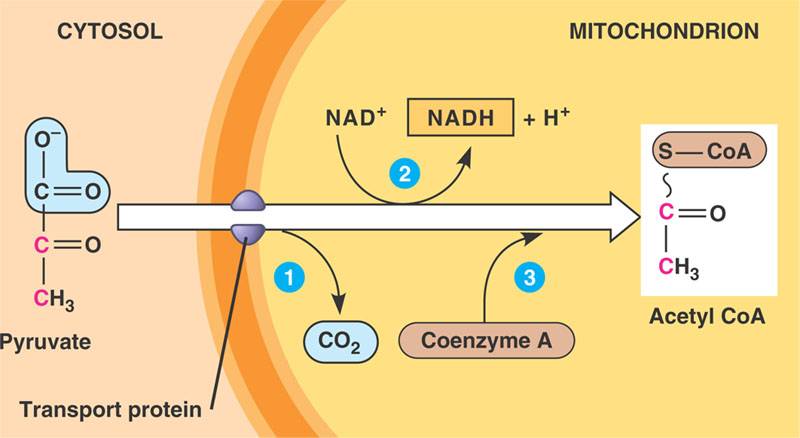During pyruvate oxidation, the two pyruvates are transported into the matrix of the mitochondria. A transport protein is required to allow for its passage through the inner membrane.
First, a low energy carboxyl group is removed as carbon dioxide.
*This is a decarboxylation reaction catalyzed by the enzyme: pyruvate decarboxylase.
Secondly, NAD+ oxidizes the 2 carbon compound forming NADH.
Thirdly, sulfur containing CoA attaches to the acetate component.
The acetyl-CoA is now ready for the Krebs Cycle!
Reactants: 2 pyruvate, 2NAD+, 2CoA
Products: 2 acetyl-CoA, 2NADH, 2H+, 2Carbon dioxide molecules
Location: Mitochondrial Matrix
Net ATP: none
This video also illustrates the electron transport chain discussed in the next blog as well!

No comments:
Post a Comment